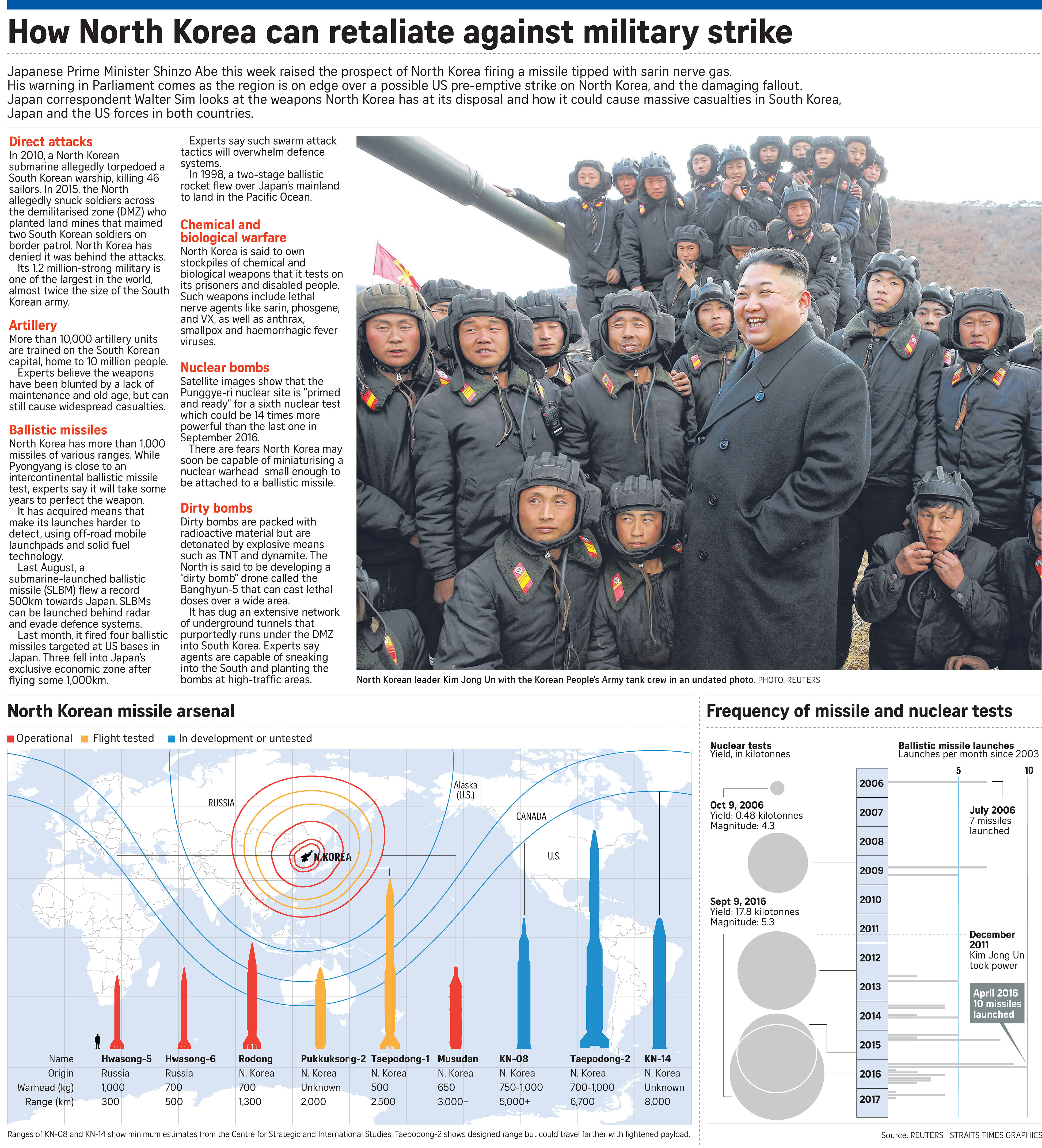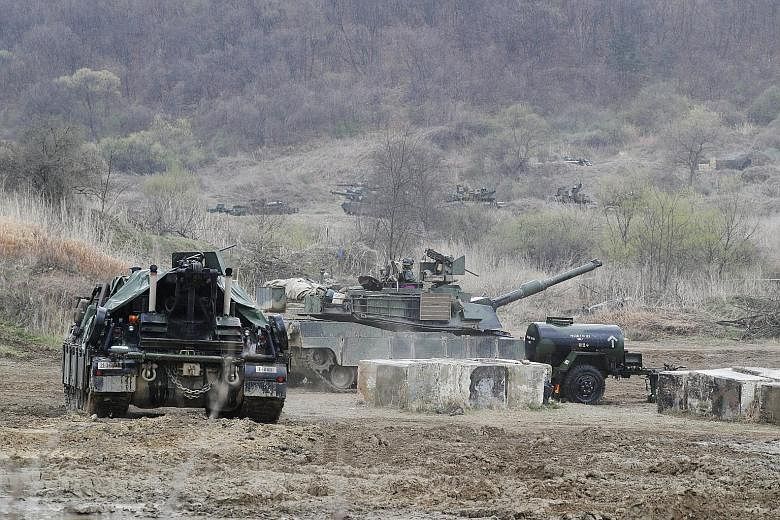SEOUL • South Korea yesterday announced it would lease several military spy satellites from a foreign country and improve its striking capabilities to destroy key military facilities across the border.
The Ministry of National Defence said it plans to pour 238.2 trillion won (S$292 billion) into a number of projects aimed at boosting its defences and combat power.
Part of the money will be spent on the one-trillion-won "425 Project" to acquire five military satellites by 2022. Before that, Seoul plans to lease satellites from other countries.
"We are in talks with three to four countries," a senior ministry official told reporters in a background briefing, reported Yonhap news agency. "We hope to sign a contract with a certain nation by early next year if possible," he said yesterday.
South Korea is developing a three-pillared national defence system against North Korea. The system consists of the Kill Chain pre-emptive strike system; the Korean Air and Missile Defence (KAMD); and the Korea Massive Punishment and Retaliation Plan (KMPR), which involves eliminating the North Korean leadership and annihilating Pyongyang with a barrage of missiles.

These three elements were initially planned for deployment in the mid-2020s, but last October, South Korea said the timeline would be brought forward to the early 2020s. North Korea conducted its fifth and most powerful nuclear test last September.
The military will also push for the early operation of new striking capabilities to destroy the North's key military facilities.
In 2013, Seoul decided to buy 170 Taurus air-to-ground missiles made by the German-Swedish joint venture Taurus Systems, reported The Korea Times.
South Korea is also developing a missile with a range of 800km, in addition to a line of shorter- range ballistic missiles and the 1,000km-range Hyunmoo-3 cruise missile.
For the KAMD project, it has decided to buy additional PAC-3 Patriot missiles and upgrade M-SAM ground-to-air mid-range missiles. More early-warning radars will be purchased, reported Yonhap.
The KMPR project involved the creation of an elite force tasked with eliminating the North's leader Kim Jong Un in the event of war.
The South's military will upgrade UH-60 choppers and other equipment to support the infiltration of special forces into Pyongyang.
On the streets of Seoul, which lies within range of the North's artillery, however, there were few signs of panic among South Koreans.
"Outside South Korea, some people are worried, but we don't feel like that in our daily lives," Ms Choi Na Young, an office worker in central Seoul, told Reuters.
Separately, the US Air Force has deployed a nuclear-sniffer aircraft at its base in Okinawa, Japan, US military newspaper Stars And Stripes reported on Wednesday.
The Boeing WC-135 Constant Phoenix, which specialises in detecting radioactive debris after the detonation of a nuclear device, arrived at Kadena Air Base last week.

